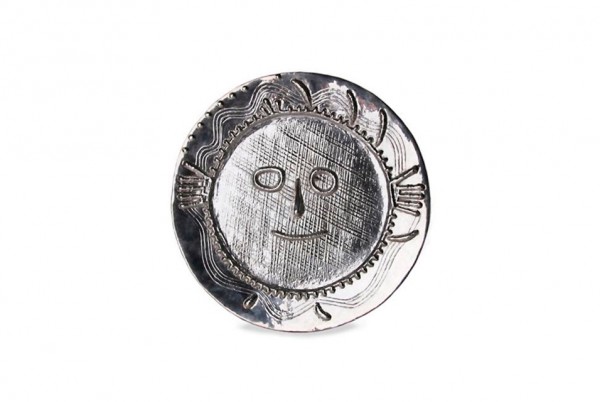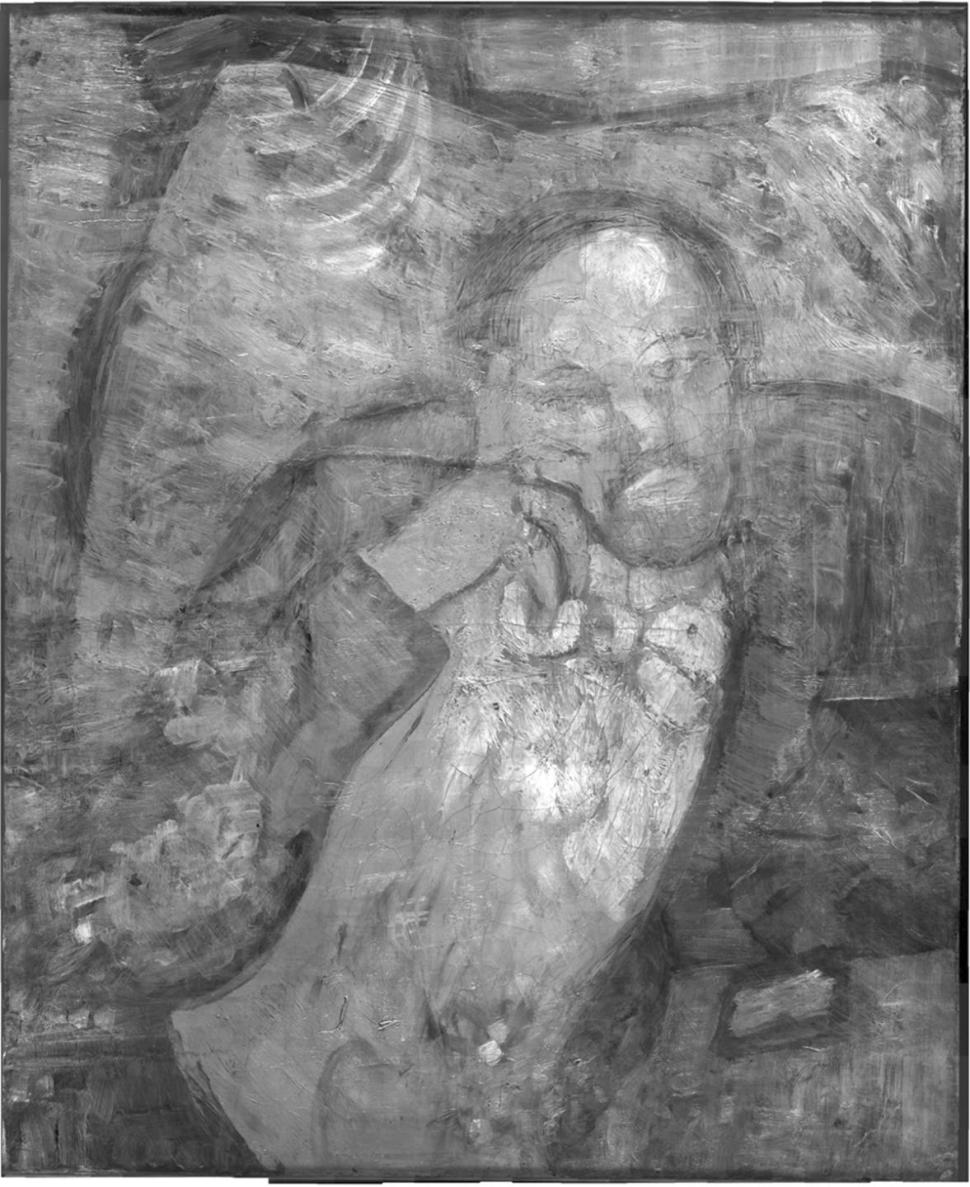Label: picasso
Friday 24th June 2016Antiques Roadshow Hilarity
.jpg)
Antiques Roadshow is a rather hilarious television show in general, even if it's unintentional. On the surface it sounds incredibly dull, but there is something almost ineffable about the show that makes it withstand the test of time, and since its 1979 start on the BBC, it's since spread to multiple countries and inspired an American spinoff version which started in 1997.
It's the American version that's got the art world rolling on the floor laughing lately, however - and not at the naivete of one of the show's subjects or the extremity of their reactions. Instead, it's one of the experts who is behind everything.
In an episode that aired recently centered around Spokane, Washington on the west coast, appraiser Stephen Fletcher was presented with a strange jug covered in screaming faces. The piece had been found at an estate sale in Eugene, Oregon by Alvin Barr, and Fletcher compared the piece to work by Pablo Picasso and estimated its origin date as somewhere in the 19th century.
Unfortunately for him, someone watching the show recognized the work as that of a high school classmate named Betsy Soule of Oregon - from 1973. Not exactly the work of Picasso!
Soule gave an interview with the Bend Bulletin, the Oregon newspaper in her hometown. “I was just a really passionate, artistic kid. I don’t know where those faces came from; they just came roaring out of me on to those pots.”
Interestingly enough, the Antiques Roadshow program page on the PBS website revised its estimate of the worth of the piece downwards dramatically, but still left it at somewhere between $3,000 and $5,000 USD, which is rather amazing for a high school art project regardless.
Fletcher corrected himself in a statement saying, “This example, with its six grotesque faces, was modeled or sculpted with considerable imagination, virtuosity and technical competence. Obviously, I was mistaken as to its age by 60 to 80 years. I feel the value at auction, based on its quality and artistic merit, is in the $3,000-$5,000 range. Still not bad for a high schooler in Oregon.”
If only we'd kept more of our own school projects, who knows what they might be worth nowadays. Either way, it's moments like this that make the Antiques Roadshow program a hilarious watch, even if it's rather rare that an appraiser finds something quite so unusual. No wonder it's been on forever!
Posted on June 24th 2016 on 08:26pm
0 Comments
Friday 29th May 2015Incredible New Auction Sale Record While it seems like the entire art world is abuzz about art fairs lately, the auction world is still going strong and setting new records of its own all the time. The big Western auction houses, Christie's, Sotheby's and the lot are regularly being joined by new auction houses in emerging markets in rapidly developing nations such as China, India, and the United Arab Emirates. The older houses still seem to be the reigning champions when it comes to sales records, as we saw over the course of May when a brand new auction record was set at Christie's.
While it seems like the entire art world is abuzz about art fairs lately, the auction world is still going strong and setting new records of its own all the time. The big Western auction houses, Christie's, Sotheby's and the lot are regularly being joined by new auction houses in emerging markets in rapidly developing nations such as China, India, and the United Arab Emirates. The older houses still seem to be the reigning champions when it comes to sales records, as we saw over the course of May when a brand new auction record was set at Christie's.
The auctioned piece that set the new world record was Women of Algiers (Version O) by Cubist master Pablo Picasso, one of the pioneers of the entire Cubist genre. The work, which was completed on February 4, 1955, is an oil on canvas piece featuring the characteristic bright colours and blend of organic and geometric shapes that are the hallmarks of the Cubist movement. The final auction price? A whopping $179.4 million USD. This makes it not just the record for a Picasso, not just the record for a painting, but the record for any piece of art ever sold at an auction in the world. (See the painting to the right, courtesy of Christie's.)
That's not the only thing that's stunning, though. This individual record sale was part of a larger week-long auction series put on by Christie's which featured artists from the 20th century, and included many of the biggest artistic names of the century. Aside from the Pablo Picasso mentioned, Claude Monet, Marcel Duchamp, René Magritte, Egon Schiele and Piet Mondrian were among those on the block. The final total for the works that changed hands? $1.4 billion US dollars. Yes, billion with a 'b'.
Perhaps auctioneers aren't going to be so worried about art fairs after all, if they keep consistently breaking their own records. Naturally, art from such established masters is an excellent investment that is virtally guaranteed to appreciate in value for those who have the initial capital – after all, it's like real estate – it's not like those old masters will be making any more of it. Perhaps there is room for auctions and art fairs to co-exist, as they tend to operate in slightly different areas of the market, but much of the smaller business that was once the bread and butter of the auction house has moved away to the art fair – we'll do a bit of research to see what the record sale made at an art fair is!
Posted on May 29th 2015 on 03:41am
0 Comments
Wednesday 18th February 2015Picasso Again - But Now Theft?

Picasso and his works seem to be all over the art world news, lately. Marina Picasso, the late artist's granddaughter, made waves several weeks ago when she announced that she plans to sell off portions of her collection of works by the famous Cubist master, bypassing the auction world and selling them privately. A Picasso piece was also stolen from the Miami Beach version of the Art Basel art fair around the new year, although that small theft pales in comparison to the one that has been alleged now.
The case in question involves a handyman who worked on the Picasso estates in the 1970s, who is alleged to have stolen a huge number of works worth an estimated £50 million on the auction block. The handyman, Pierre Le Guennec, claims that the pieces were given to him by Picasso's second wife in 1970, with the nothing more than the words, "Here, it's for you. Take it home." The Picasso estate, and his surviving son Claude, contend that this is completely ridiculous given the value of the pieces in question. Claude Picasso told the French newspaper Liberation, "That doesn't stand up. These works were part of his life."
The pieces in question amount to some 180 lithographs, collages and paintings, as well as 91 drawings all by Pablo Picasso. They have remained virtually untouched, sitting in the handyman's garage since the day he brought them home.
Originally, there were no formal charges laid against Le Guennec, while an investigation began to determine how he came to be in possession of them. After eight months of searching, formal charges were finally laid by the police. The pieces were seized, and the couple could face up to five years in prison and a 375,000 euro fine.
Probably the most important pieces that were seized was a watercolour that was painted during the artist's famous Blue Period, as well as 9 Cubist paintings that make up a massive portion of the value of the art hoard. These pieces alone are estimated at a value of £24,500,000, making them as valuable as all the rest of the pieces put together.
It remains to be seen whether or not the couple will be found guilty, as the case is still winding its way through the various legal niceties, but regardless, it is good to see these masterworks back in the light of day where they can be appreciated by everyone.
Posted on February 18th 2015 on 02:34pm
0 Comments
Friday 06th February 2015Picasso Sell Off

The granddaughter of Pablo Picasso, famous master of Cubism, has announced that she plans to sell some of the massive collection she inherited “one by one, based on need”, in order to finance her charitable work. Her collection of works by Picasso is estimated at over 10,000 individual pieces, ensuring that she probably has enough material to keep any sort of charity work going that she cares to undertake, with ease. Media reports are rife with speculation only, however, as Marina Picasso has announced that she plans to sell the work privately, and hasn't said much more than that.
In an interview with the New York Times, Marina Picasso said, "“It’s better for me to sell my works and preserve the money to redistribute to humanitarian causes. I have paintings, of course, that I can use to support these projects.”
This, naturally, sent the world of the art auctioneer into a tizzy, amid fears that a large sell off of Picasso's work could depress the value of every other Picasso on the market. This was further compounded by the fact that nobody knows exactly how many pieces she plans to sell from her collection, which has approximately 300 paintings in addition to a much larger number of etchings, sketches, and ceramic pieces.
Rumours are that she plans to sell seven major paintings, which could fetch up to £200 million, although this is not confirmed. All she has said done is confirm that she plans to sell some, and to dispel rumours tht she was also planning to sell Pablo Picasso's villa, La Californie, in the south of France where she currently lives.
Speaking to The Guardian, Melanie Gerlis of The Art Newspaper said, “She obviously is great provenance and she must know a lot of people. The reality is that there are a lot of ways to sell art. We are used to auction versus dealer but now you have auctions acting as dealers, you have agents, you have advisers, people are even selling things over Instagram. It is a changing landscape. If she was selling 300 paintings all at the same time then yes that may depress the market. It doesn’t sound to me like it is going to be a dramatic fire sale.”
Hopefully, once everyone has gotten over the shock of the idea that she's selling things privately instead of using a "respectable" auction house (although it seems like the media are almost creating that frenzy themselves), we can relax in knowing that she's putting the money from the sales to a good cause.
Posted on February 06th 2015 on 05:21pm
0 Comments
Saturday 06th December 2014Picasso Stolen from Miami Art Fair

Art fairs are becoming de rigeur in the modern art world, growing to replace all the traditional gallery models in terms of popularity and sales volume in a very short time. It seems like popularity isn't the only thing that they're growing in, however, as this year a piece was stolen from a prominent Miami art fair - just probably not the one you're thinking of. Art Basel in Miami Beach is in full swing, but they're not the ones who have had something stolen, as it turns out. A smaller art fair, Art Miami, is the center of the theft, which occurred in the last few days.
Leslie Smith Gallery's booth at the fair was showing a number of pieces by famed Cubist Pablo Picasso, including the artifact that was stolen, Visage aux Mains (Face with Hands, 1956), a silver plate about 17 inches in diameter. Valued at roughly $85,000 USD, the piece is the first the gallery owner has ever had stolen, whether from an art fair or not. Classified as a grand heist by the police due to the value of the work, the current theory seems to be that the thief had little to no knowledge of the art world and the vagaries of its pricing models, as a much more expensive ceramic piece, also by Picasso, was hanging directly below the stolen silver plate.
Currently, the market for Picasso ceramics is in quite a boom, meaning that the thief is likely unaware of the intricacies of art and likely wanted it for its silver value - a mere $400 USD. It is possible, of course, that they simply wanted the piece itself and have no plans to resell it or melt it down, but until the thief is caught nothing can be said for sure. The organizers of the fair have offered a $5,000 reward for the return of the piece, no questions asked..A statement was sent to artnet news by fair director Nick Korniloff, emphasizing this:
We have issued a $5,000.00 reward for the return of the work with no questions asked—based on our own internal conclusion that whomever took the piece knows nothing about art and took it based on the fact that they thought it to be solid silver. [...] It makes absolutely no sense that this work would be targeted by anyone with knowledge of art. We hope that the piece is returned to the owner to preserve the existence of the work for future generations.
Here's hoping they get it back!
Posted on December 06th 2014 on 03:54pm
0 Comments
Friday 19th September 2014But Was It a Joke?
Often in the art world, it can be hard to guage how seriously to take something. In our neverending desire to reimagine and recontextualize the world, and our self-awareness of both this effort and the way this effort is perceived, it can sometimes be difficult to tell if sometihng is intended as a series work of art, a complicated conceptual joke, or both. This is especially true of artists ever since the beginning of Dada, Surrealism, and Abstract Expressionism.
This curious and intriguing interaction with the viewer was highlighted recently thanks to the Picasso museum in Paris, on the day of it's unveiling after a series of renovations. Expectations and anticipation ran high, as the renovations kept the museum closed and out of the spotlight for almost all of the five years it had been shuttered.
“I will first of all calm your ardour and your enthusiasm … but you’re going to see nothing. It’s a great disappointment. It’s an empty museum,” said the newly-appointed director Laurent Le Bon, who has held the directorship for only 3 months at the time of the press visitation - his predecessor had been fired over the numerous gaffes and delays that extended the renovation so dramatically.
In short, no, it wasn't a joke. The museum really has been closed for 5 years, only to reopen for a press viewing with no artwork hung on the walls. One can't help but feel sorry Le Bon, who had to address the press and take responsibility for the failings of the person who had held the post before him. It's strange to consider the fact that such a prestigious museum could survive under so many years of careless mismanagement, but also provides hope for the future that Laurent Le Bon - roughly translated in English as Lawrence the Good - may be able to wring some semblance of order out of the chaos and bring this tribute to the master of Cubism back from the abyss and into the limelight.
Somewhat inexplicably, however, the organizers of the press day chose to host the event well before the museum was ready, meaning that many excited vistors were treated to an intentionally bland arrangement of architecture - white stucco, white stairs, white walls, etc. This makes perfect sense when there is actual artwork on the walls, but when the musuem is empty, it merely serves to highlight that emptiness, as it has few architectural achievements in its own right. Certainly not what you'd like to hear after a 5 year renovation! Regardless, the museum will reopen officially to the public in October, which hopefully will serve to justify the choices made by the renovators.
Posted on September 19th 2014 on 11:57pm
0 Comments
Wednesday 04th June 2014The Hidden Works

If you're a painter, you might have been here before: you're working on a canvas, nearly finished executing your vision, and suddenly you get frustrated and decide to scrap the project. Or maybe you've suddenly come up with a brilliant painting but you're all out of prepped canvases, and you need to start work immediately to preserve the clarity of your idea. Whatever the reason, the only way to get yourself a new working space is to paint over something you've already done. It's probably happened to you at least once in your artistic career, and if not, then you should consider yourself lucky! But what happens when you turn out to be one of the most famous painters of the previous century? Gallery and museums will bring out the forensic toolkit!
This is exactly what happened recently with one of the first well-known pieces by Pablo Picasso, the patron saint of Cubism, one of the most famous artists from the 20th century. One of his first pieces to be considered a masterpiece, the 1901 painting 'The Blue Room' signalled the beginning of his famous (to Picasso fans, at least) 'Blue Period', a 3 year stretch marked by a certain melancholia. Art experts had long been puzzled by some inconsistencies in the brush strokes found in the painting, strokes that didn't match what the surface painting appeared to show. As far back as 1954, one expert had noticed these discrepancies, but it wasn't until the mid 1990s that the art world got around to bringing in some sophisticated technology - the X-ray.
Not typically used on paintings, x-rays of 'The Blue Room' showed that there was indeed something painted beneath the surface, although x-rays weren't sufficient to provide a clear image of what, if anything, the underlying elements were. Thanks to recent advances in forensic technologies, however, experts have finally been able to get a glimpse of the painting Picasso didn't want to keep. An infrared camera has shown that the painting beneath The Blue Room is in fact a portrait of a man in a bow tie that appears nearly completed. No mention of his reasons for abandoning the portrait have been found, but one can only wonder what other famous artists may have chosen to discard before they realized that they were to become the pivotal artists of their age. It almost makes one start to conjure up visions of The Da Vinci Code, with secret messages hidden beneath renaissance masterworks!
Posted on June 04th 2014 on 02:57pm
0 Comments
.jpg) Antiques Roadshow is a rather hilarious television show in general, even if it's unintentional. On the surface it sounds incredibly dull, but there is something almost ineffable about the show that makes it withstand the test of time, and since its 1979 start on the BBC, it's since spread to multiple countries and inspired an American spinoff version which started in 1997.
Antiques Roadshow is a rather hilarious television show in general, even if it's unintentional. On the surface it sounds incredibly dull, but there is something almost ineffable about the show that makes it withstand the test of time, and since its 1979 start on the BBC, it's since spread to multiple countries and inspired an American spinoff version which started in 1997. While it seems like the entire art world is abuzz about art fairs lately, the auction world is still going strong and setting new records of its own all the time. The big Western auction houses, Christie's, Sotheby's and the lot are regularly being joined by new auction houses in emerging markets in rapidly developing nations such as China, India, and the United Arab Emirates. The older houses still seem to be the reigning champions when it comes to sales records, as we saw over the course of May when a brand new auction record was set at Christie's.
While it seems like the entire art world is abuzz about art fairs lately, the auction world is still going strong and setting new records of its own all the time. The big Western auction houses, Christie's, Sotheby's and the lot are regularly being joined by new auction houses in emerging markets in rapidly developing nations such as China, India, and the United Arab Emirates. The older houses still seem to be the reigning champions when it comes to sales records, as we saw over the course of May when a brand new auction record was set at Christie's. Picasso and his works seem to be all over the art world news, lately. Marina Picasso, the late artist's granddaughter, made waves several weeks ago when she announced that she plans to sell off portions of her collection of works by the famous Cubist master, bypassing the auction world and selling them privately. A Picasso piece was also stolen from the Miami Beach version of the Art Basel art fair around the new year, although that small theft pales in comparison to the one that has been alleged now.
Picasso and his works seem to be all over the art world news, lately. Marina Picasso, the late artist's granddaughter, made waves several weeks ago when she announced that she plans to sell off portions of her collection of works by the famous Cubist master, bypassing the auction world and selling them privately. A Picasso piece was also stolen from the Miami Beach version of the Art Basel art fair around the new year, although that small theft pales in comparison to the one that has been alleged now. The granddaughter of Pablo Picasso, famous master of Cubism, has announced that she plans to sell some of the massive collection she inherited “one by one, based on need”, in order to finance her charitable work. Her collection of works by Picasso is estimated at over 10,000 individual pieces, ensuring that she probably has enough material to keep any sort of charity work going that she cares to undertake, with ease. Media reports are rife with speculation only, however, as Marina Picasso has announced that she plans to sell the work privately, and hasn't said much more than that.
The granddaughter of Pablo Picasso, famous master of Cubism, has announced that she plans to sell some of the massive collection she inherited “one by one, based on need”, in order to finance her charitable work. Her collection of works by Picasso is estimated at over 10,000 individual pieces, ensuring that she probably has enough material to keep any sort of charity work going that she cares to undertake, with ease. Media reports are rife with speculation only, however, as Marina Picasso has announced that she plans to sell the work privately, and hasn't said much more than that. Art fairs are becoming de rigeur in the modern art world, growing to replace all the traditional gallery models in terms of popularity and sales volume in a very short time. It seems like popularity isn't the only thing that they're growing in, however, as this year a piece was stolen from a prominent Miami art fair - just probably not the one you're thinking of. Art Basel in Miami Beach is in full swing, but they're not the ones who have had something stolen, as it turns out. A smaller art fair, Art Miami, is the center of the theft, which occurred in the last few days.
Art fairs are becoming de rigeur in the modern art world, growing to replace all the traditional gallery models in terms of popularity and sales volume in a very short time. It seems like popularity isn't the only thing that they're growing in, however, as this year a piece was stolen from a prominent Miami art fair - just probably not the one you're thinking of. Art Basel in Miami Beach is in full swing, but they're not the ones who have had something stolen, as it turns out. A smaller art fair, Art Miami, is the center of the theft, which occurred in the last few days. Often in the art world, it can be hard to guage how seriously to take something. In our neverending desire to reimagine and recontextualize the world, and our self-awareness of both this effort and the way this effort is perceived, it can sometimes be difficult to tell if sometihng is intended as a series work of art, a complicated conceptual joke, or both. This is especially true of artists ever since the beginning of Dada, Surrealism, and Abstract Expressionism.
Often in the art world, it can be hard to guage how seriously to take something. In our neverending desire to reimagine and recontextualize the world, and our self-awareness of both this effort and the way this effort is perceived, it can sometimes be difficult to tell if sometihng is intended as a series work of art, a complicated conceptual joke, or both. This is especially true of artists ever since the beginning of Dada, Surrealism, and Abstract Expressionism.  If you're a painter, you might have been here before: you're working on a canvas, nearly finished executing your vision, and suddenly you get frustrated and decide to scrap the project. Or maybe you've suddenly come up with a brilliant painting but you're all out of prepped canvases, and you need to start work immediately to preserve the clarity of your idea. Whatever the reason, the only way to get yourself a new working space is to paint over something you've already done. It's probably happened to you at least once in your artistic career, and if not, then you should consider yourself lucky! But what happens when you turn out to be one of the most famous painters of the previous century? Gallery and museums will bring out the forensic toolkit!
If you're a painter, you might have been here before: you're working on a canvas, nearly finished executing your vision, and suddenly you get frustrated and decide to scrap the project. Or maybe you've suddenly come up with a brilliant painting but you're all out of prepped canvases, and you need to start work immediately to preserve the clarity of your idea. Whatever the reason, the only way to get yourself a new working space is to paint over something you've already done. It's probably happened to you at least once in your artistic career, and if not, then you should consider yourself lucky! But what happens when you turn out to be one of the most famous painters of the previous century? Gallery and museums will bring out the forensic toolkit!



